








Tobi Lebron was one of the hundreds of hippies who attended Love Your Neighbor Project’s All You Need is Love ’60s Prom Night.
In a move aimed at bolstering services and community engagement for senior citizens in Sea Cliff, the village board has appointed Tracy Arnold Warzer as the new Senior Citizen Program Development Specialist.
Warzer, a lifelong resident of the area with an extensive background in program development and community outreach, brings a wealth of experience to her new role. She has lived in Sea Cliff for 33 years and is a lifelong resident of the North Shore having grown up in Glen Head and
Old Brookville. She is a graduate of the North Shore School District.
The decision to hire Warzer comes after an extensive search process, during which the village board sought a candidate who could effectively support and enhance services for Sea Cliff’s senior population.
“I’m really excited about collaborating with our existing committees,” Warzer said. “We have the youth activities board, and they’re already excited about creating opportunities for high school seniors to offer tech support to seniors.”
With over 35 years of experience in program development and management, Warzer said she




This is the first in a series delving into the complexities of elections to provide a better understanding of one of Americans’ most precious privileges, the right to vote.
Democrat Tom Suozzi, the former three-term representative for the 3rd Congressional District, will be returning to the House of Representatives after winning the Feb. 13 special election. Suozzi left Congress in 2022 to run for governor, but lost in the Democratic primary.
County Board of Elections.
“It was definitely a decisive win for the party, a credit to the candidate and the ground game by the Nassau County Democratic Committee,” Scheuerman said.

Although Suozzi, 61, is familiar to voters, a lifelong Glen Cove resident who served as Nassau County executive from 2022 to 2029 and as Glen Cove’s mayor from 1994 to 2001, his name recognition did not lead to a landslide victory last week. But his 8-point win over Republican Mazi Pilip was impressive, according to James Scheuerman, the Democratic commissioner of the Nassau
And although Pilip, 44, a Democrat from Great Neck, is a second-term county legislator representing District 10, prior to Election Day, many voters told the Herald they knew nothing about her. Her decision to rarely speak publicly, and to debate Suozzi only once — five days before the election — apparently did not win over many voters.
And Pilip’s comment that she would not support former President Donald Trump in his bid for re-election if he were convicted of a crime may have led some Republicans to vote for Suozzi, or not vote at all.
Tony Lagos, a Queens resident who voted for Pilip, said he didn’t find the election results surprising.
“I think she lost because a CONTINUED ON PAGE 10
CONTINUED FROM PAGE 1
has a proven track record of implementing innovative initiatives to support senior citizens. Most recently, she served as the Director of Community Programs at the Harborside Senior Living Community in Port Washington, where she oversaw all senior programming and coordinated internship programs for art therapy students.
“I’ve been working with seniors in that capacity for 10 years,” Warzer explained. “And prior to that, I was program coordinator at the Grace Avenue Senior Center, where I had extensive experience working with seniors in a social model day program for frail elderly seniors.”
Warzer’s appointment signals a renewed focus on expanding services and programs for the Sea Cliff senior community. Mayor Elena Villafane expressed confidence in Warzer’s ability to make a positive impact in her new role.
“Tracy comes to the village with a long history of employment in this area,” Villafane said. “She’s really an amazing resource for our senior citizen community, and she’s really hoping to implement intergenerational activities and programs for health and wellness.”
the perfect person for the position was not just her competence, but her creativeness and willingness to create new opportunities for seniors in the community.
Warzer’s plans for the position include collaborating with existing committees to offer a wide range of programs and activities for seniors. She aims to create an age-friendly community where seniors can actively participate in events and feel connected to their neighbors.
“I think we have an extraordinary community,” Warzer remarked. “Sea Cliff is well known for its cultural arts and amazing social engagement. But we can make a huge impact on our community as a model age-friendly community where seniors can be a vibrant part of it.”
TRACY ARNOLD WARZER Senior citizen, program development specialistIn addition to her role in program development, Warzer will serve as a support system for seniors in the community, providing information and assistance with accessing resources such as the heat program for seniors with limited incomes. She said she is particularly interested in creating intergenerational relationships between seniors and teenagers and children in the community, which will benefit both groups.
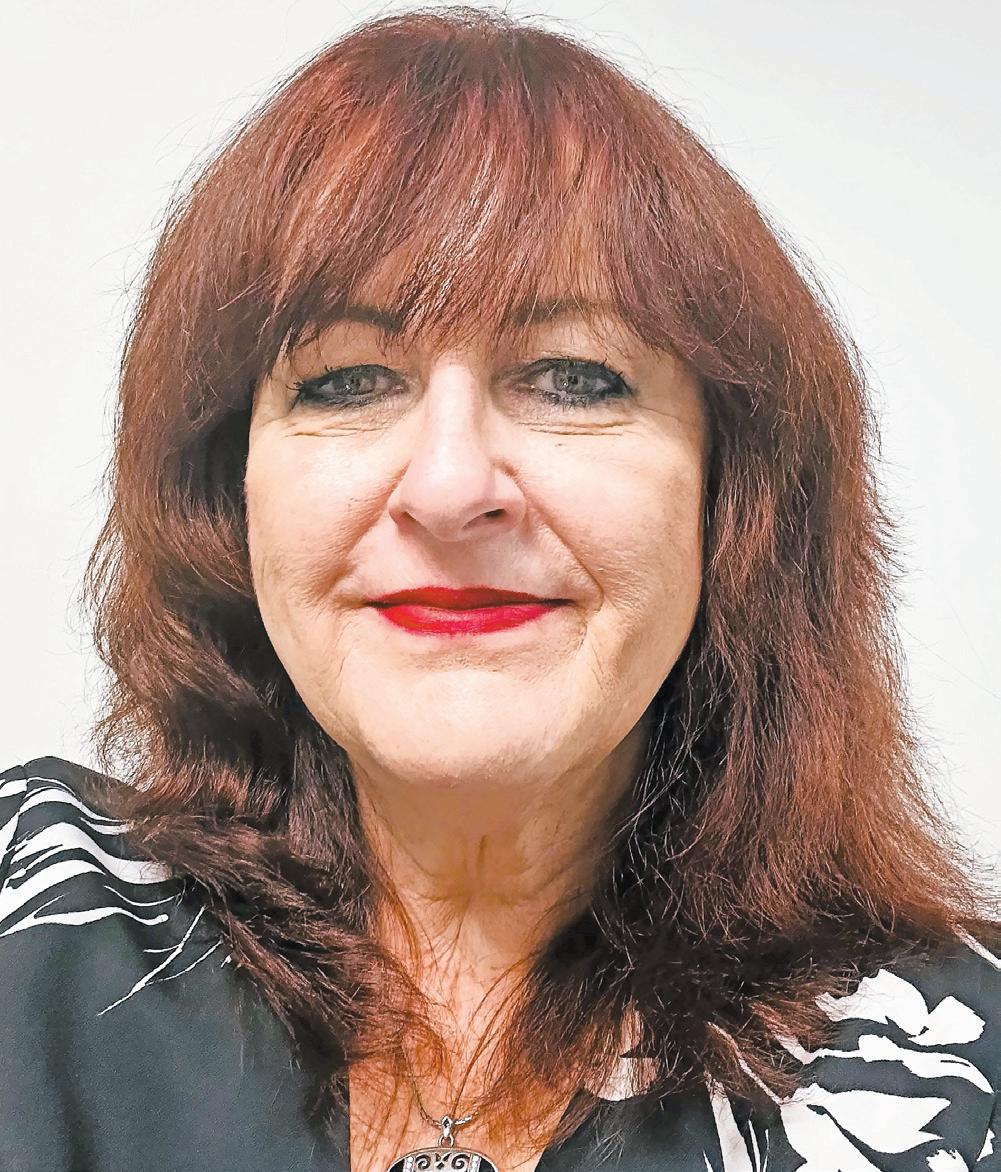
Villafane described the position as a “support system to the seniors in the community.” An important part of the role will also be to work with local organizations such as Mutual Concerns to help organize programs for the seniors, such as the weekly lunch at St. Luke’s Parish, as well as providing directions to outside resources.
According to Villafane however, what made Warzer
Warzer’s appointment represents a continuation of the village’s commitment to supporting its senior population and ensuring that they have access to the services and resources they need to thrive. With her wealth of experience and dedication to community engagement, Warzer said she hopes to be able to make a significant difference in the lives of Sea Cliff’s seniors.
“The level of engagement that is more active and
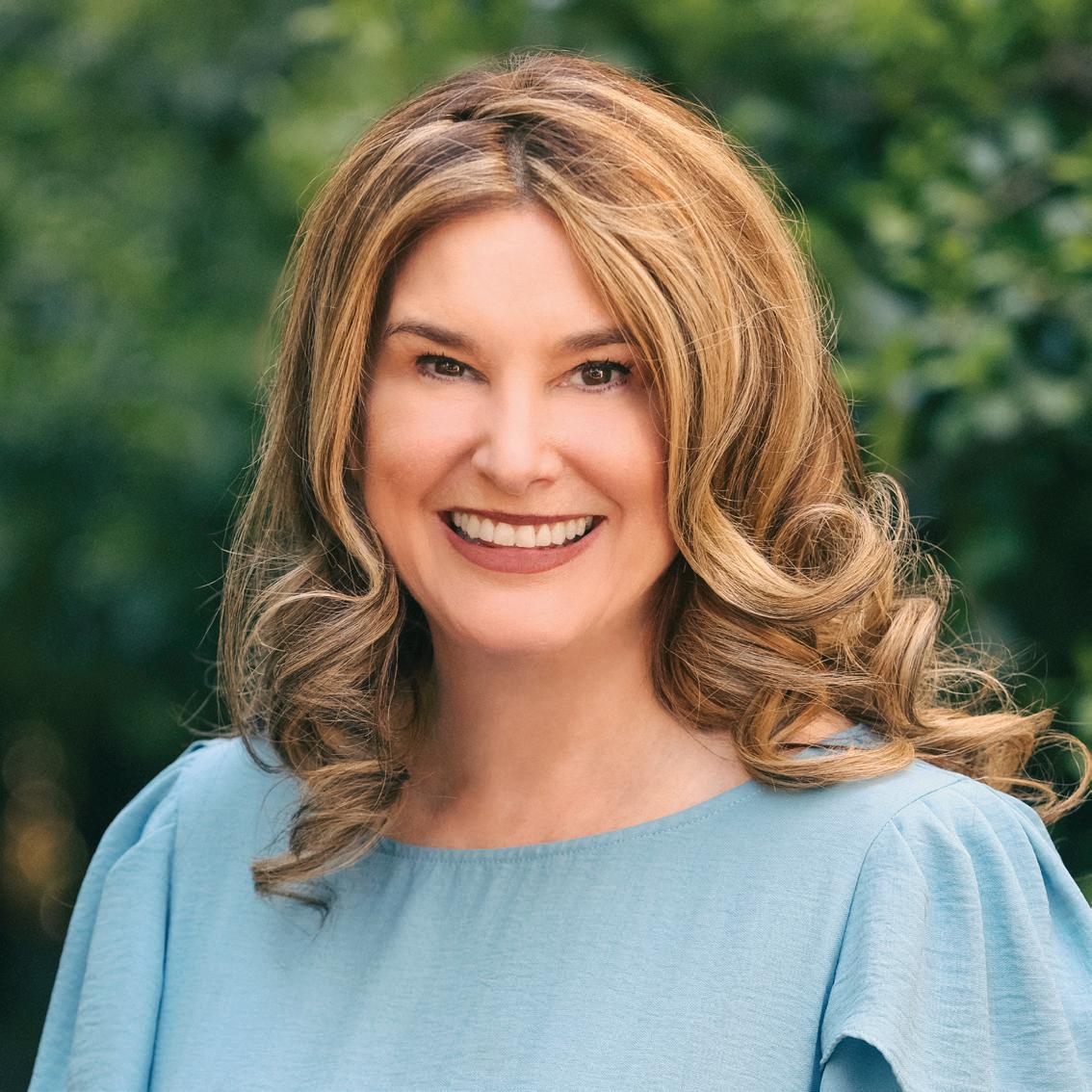
more socially connected really helps people live longer and with a much greater quality of life,” Warzer said. “If I can make a difference in that way, that would be my dream job.”
 Courtesy Tracy Arnold Warzer
Courtesy Tracy Arnold Warzer
An upcoming exhibit at the North Shore Historical Museum to open on Feb. 29 delves into the maritime history of the North Shore, shining a spotlight on shipwrecks and sinkings that occurred during the late 19th and early 20th centuries. Unlike the grand scale of the Titanic disaster, these incidents, while not as widely known, left indelible marks on the local communities.
WFrom the tragedy of the Lexington in 1840 to the General Slocum disaster of 1904, and more, the exhibit showcases the stories, photographs and firsthand accounts that have shaped the area’s maritime heritage. Notable incidents like the Rye Cliff sinking in 1918 and the William T. Bell loss in 1927 will be featured, offering visitors insights into the diverse range of challenges faced by seafarers and coastal communities.
hile you could say that the North Shore is kind of isolated and small, there’s actually a lot that has gone on here and continues to go on and develop
AMY DRISCOLL director, North Shore Historical Museum
Through a curated collection of artifacts, newspaper reports, and personal narratives, the exhibit aims to capture the human experiences and the impact of these maritime disasters. By highlighting these lesser-known incidents, the museum hopes to foster a deeper appreciation for history and the North Shore’s enduring connection to the sea.
“While you could say that the North Shore is kind of isolated and small, there’s actually a lot that has gone on here and continues to go on and develop,” Amy Driscoll, the museum’s director, said. “The history is very diverse. We have shipwrecks and we have estate homes and a lot of industry. Glen Cove was very much an industrial town.”
From the solemn reflections on lives lost to the resilience of coastal communities, the exhibit promises to be a compelling journey.
The Lexington
The Lexington was a paddlewheel steamboat that transported passengers and cargo across the Sound starting in 1835. The ship was commissioned and designed by Cornelius Vanderbilt, the patriarch of the business dynasty, and was considered one of the most cutting-edge vessels of its time.
It is suspected that the ship’s smokestack caught fire on the night of Jan. 13, 1840, while it was sailing from New York to Stonington, Connecticut, with between 143 and 154 passengers and crew, as well as 150 bales of cotton. All but four of the people on board were killed in the ensuing conflagration, drowned, or died of hypothermia.
The General Slocum disaster occurred on June 15, 1904, when the steamboat caught fire in the East River while carrying approximately 1,300 passengers, primarily German immigrants from Saint Mark’s Evangelical Lutheran Church. Poor safety measures, including ineffective life-saving equipment and lack of crew experience, contributed to the tragedy. Despite onlookers’ warnings, the crew failed to act promptly. Over 1,000 lives were lost, making it the deadliest disaster in New York City before Sept. 11, 2001. Investigations revealed failures in inspections and emergency preparedness. The incident led to improvements in
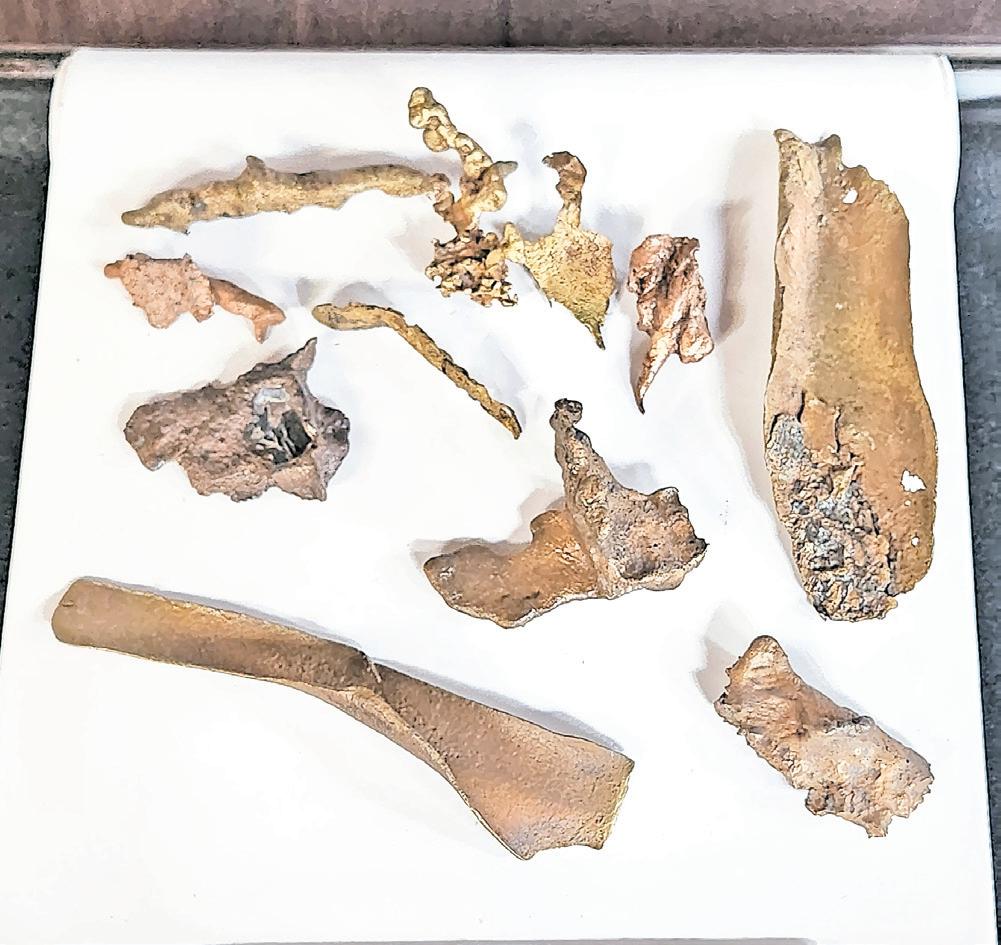
maritime safety, including the transfer of responsibility to the U.S. Coast Guard in 1946. Today, an annual ceremony at Tompkins Square Park honors the victims, serving as a reminder of the importance of safety measures in maritime transportation.
The 137.5-foot-long sidewheel steamship was built in Maine and launched in 1898. It was traveling between Sea Cliff and Rye Beach in Westchester County six times a day when, on Sept. 28, 1918, it caught fire at the Sea Cliff pier, destroying the pier in the process. It burned to the waterline before sinking in 25 feet of water in Hempstead Harbor several hundred yards offshore near the mouth of Glen Cove Creek.
The exhibit is a collaborative effort with researchers Bill Bleyer, Adam Grohman, Bradley Golden, and the Village of Bayville Museum and the Village of Sea Cliff Museum. The North Shore Historical Museum, 140 Glen St., Glen Cove, will run the exhibit from Feb. 29 through June.

While some artifacts from ship wreckages are fragile, others like this fork from the wreckage provide a glimpse into the everyday life of a passenger aboard the Rye Cliff.
Governor Kathy Hochul’s proposed state budget for 2024-2025 is sending shockwaves through school districts throughout the North Shore of Long Island. Despite the fact that the governor has dedicated more funds to education in this budget than any other in New York’s history, several school districts are set to lose hundreds of thousands of dollars in state funding, while even those that are receiving money claim that it isn’t enough.
Christopher Zublionis, superintendent of the North Shore School District, explained that although his district is set to receive roughly $400,000 more in state funding, in the context of the district’s loss of funds from the LIPA deal, the funds won’t be enough. According to Zublionis, the district stands to lose roughly $2.38 million dollars in direct payments from LIPA this year alone, affecting the North Shore and neighboring school districts.
“We believe N.Y. state must be taken in context with these historic revenue losses that are truly unique to North Shore, Northport, Island Park and Port Jefferson,” he wrote in a text.
Francesco Ianni, superintendent of Oyster Bay-East Norwich Central School District, said his district is grappling


Owith the implications of a staggering 20% reduction in state aid. The superintended highlighted the disproportionate burden placed on communities where property values skew the perception of wealth. Despite the perception of affluence, districts like Oyster Bay-East Norwich and Locust Valley are constrained by tax caps, leaving them heavily reliant on state aid to maintain educational standards.
“This is not just an Oyster Bay problem,” Ianni explained. “We’re doing everything in our power to make sure that our voices our heard.”
The proposed cuts, totaling over $530,000 for the Oyster Bay-East Norwich School District alone, threaten essential programs and services. Ianni emphasized the need for creative solutions to mitigate the impact on students while navigating the rigidity of budget allocations.
behind the cuts. The elimination of the “hold harmless” provision and adjustments to inflation calculations undermine the stability of education funding according to the senator.
ur taxpayers cannot continue to pay more, and it’s irresponsible for the state to put that burden back on us time and time again.
JACK MARTINS state senator, 7th District
Jack Martins, Republican state senator for the 7th District, which encompasses parts of Locust Valley and Oyster Bay-East Norwich, echoed these concerns, pointing out the flawed logic
Martins, who addressed superintendents and parents from several districts at the beginning of February in Long Beach at a news conference, argued for a more equitable distribution of state aid, suggesting a minimum threshold to ensure districts receive at least 20 percent of their budget from the state. He highlighted the discrepancy between the paltry $500 per student reimbursement and the actual cost of education, estimated at $20,000 per student, calling for a reassessment of funding formulas to reflect current realities.
“They’re going to actually force the school districts to either cut programs or raise taxes,” Martins asserted. “Our taxpayers cannot continue to pay more, and it’s irresponsible for the state to put that burden back on us time and time again.”
Lauren Themis, vice president of the Locust Valley Board of Education, underscored the urgency of the situa-
tion, noting the abruptness of the proposed changes and the lack of justification provided. Locust Valley, like many districts on Long Island, faces a daunting task of reconciling reduced funding with fixed expenses. With nearly 90 percent of the budget dedicated to contractual obligations, any cuts directly impact vital educational initiatives and support services.
Themis emphasized the need for collective action, urging constituents to voice their concerns to elected officials and mobilize support against the proposed cuts.
“The burden will be placed on the districts this year to come up with ways to cut, and that will affect the student population,” Themis said. “When you have both sides of the aisle as well as the teachers union, you know it’s a big issue.”
In response to these challenges, local stakeholders are rallying to advocate for fair and adequate funding for education. Ianni, along with leaders from other districts, is actively engaging legislators and community members to raise awareness and push for revisions to the budget. Martins, recognizing that there is bipartisan opposition against the proposed cuts, said he will work across the aisle to represent the interests of his constituents and advocate for a more equitable funding framework.

























The Friends of the Gold Coast Library announced four community members have joined their team of dedicated volunteers to support the library’s programs and prepare for the new library. Michelle Yadoo, Deborah Orgel Gordon, Lisa Vizza, and Dave Dimeola have volunteered their time and efforts to support the library in a variety of new roles.
Their new titles are:
Michelle Yadoo: Webpage Master
Deborah Orgel Gordon: Community Outreach and Social Media Groups Coordinator
Lisa Vizza: Community Outreach Coordinator
Dave Dimeola: Marketing, Logo Design, and Branding Specialist
Anyone can help support the Gold Coast Library by becoming a Friend or donating today. Visit their new webpage at goldcoastlibrary.org/fol to learn more and get involved.


Love Your Neighbor Project held its 4 th annual prom night fundraiser on Feb. 10, welcoming roughly 115 neighbors into St. Luke’s Episcopal Church to enjoy the music and vibes of the 1960’s. The event, which raised over $10,000, was a groovy evening and a big success.
Over 100 ‘neighbors’ partied at St. Luke’s Episcopal Church to raise money for Love Your Neighbor Project
Attendees danced along to music from the Beatles, the Grateful Dead and more.


Love






OpenAI, an artificial intelligence and research company, publicly released ChatGPT-3 on Nov. 30, 2022. Now, a little more than a year later, the sophisticated chatbot — with more than 180 million monthly users — is seemingly developing faster than users can keep up. To understand how this language model became one of the most technologically advanced virtual assistants in the world, you have to go back nearly 75 years.
1966:
1950:
First part in a series exploring the presence of artificial intelligence in our schools, and over time, in society as a whole. Thoughts? Questions? Ideas?
Email us at execeditor@liherald.com.
Artificial intelligence — it all starts with an idea. One developed by a computer programmed to mimic the human intelligence process through learning, reasoning and self-correction.
AI is already deeply ingrained in society. Whether it be smartphones with virtual assistants like Siri and Bixby, search engines making suggestions for what we’re looking for online, to even the spam filtering and email categorization in email platforms like Gmail.
The fast-growing advancements of AI may be hard to keep up with, especially as more and more platforms develop that specialize in AI like ChatGPT and Canva.
Television and news outlets focus more on how AI can turn your dog into a Muppet, or how it can instantly write a sonnet about someone’s favorite desserts.
But AI is finding its way into more and more of our everyday lives and it’s something that has institutions like our public schools racing to find the best ways to not only adapt, but to appropriately integrate AI into the classroom.
receives,” ChatGPT responded when asked what it was designed for.
It’s commonly used to answer a variety of questions, or brainstorm ideas. It can help draft emails and compose essays. It can help with extensive research, and even translate text from one language to another.
And for those looking to be a little less serious, ChatGPT can tell jokes, strike up a casual conversation, and even participate in storytelling and roleplaying scenarios.
But it can also write term papers, or essays. Or complete homework. And detecting when AI is being used is virtually impossible. That has created some concerns for school administrators, while at the same time tasking them to redevelop curriculum that prepares future minds for a future where AI is prevalent.

Ting Wang, a Stony Brook University associate professor who also directs its Algorithmic Learning, Privacy and Security Lab, describes the original conception of AI as “a feeble attempt to recreate intelligence and to help humans achieve specific tasks.” He believes developers have come a long way in achieving success doing just that.
ChatGPT is a popular example of this. Launched in late 2022, the software describes itself as an online interface that is “like having a conversation with a very knowledgeable and helpful friend — except this friend is actually a computer program.” It has been trained on swaths of data, making it capable of completing many different tasks ranging from gathering information, getting some helpful advice, or even looking to simply have a friendly chat.
“ChatGPT is designed for generating human-like text based on the input it
“From the academic perspective, I think one of the challenges is that it’s becoming harder and harder to obtain these AI models because they’re super expensive, the training costs, and have a requirement of huge amounts of data,” Wang said. “Those type of resources are not so accessible for the academia world.”
Google, Bing and other search engines have used forms of artificial intelligence for years, but more recently began making its integration more obvious. Google integrated what it calls “generative AI” into its systems some 20 years ago, which typically predicts the next word in a search phrase.
ChatGPT also can edit certain articles, blog posts or other forms of writing. If someone asks ChatGPT to write an email with specific requirements, for example, the AI can handle it because its “training” has covered these sort of scenarios. What makes ChatGPT unique from other AI platforms, Wang said, is the massive amounts of data that “trains” it.
“You can see many artists, especially digital artists, using this program to create content that you cannot easily create manually,” Wang said.
Brett Tanzer — a product management vice president for Microsoft’s cloud platform, Azure — says models created by AI developers are installed in products like Bing and Microsoft Copilot, an

Nicole Wagner/Herald
A reporter asks ChatGPT to describe not only itself, but the artificial intelligence language model that powers it. AI has gone from science-fiction to science-fact, and schools are among a number of institutions around the world working to adapt.
AI companion technology which utilizes ChatGPT among other language models, to aid users in their day-to-day lives.
This helps users brainstorm alternatives for ideas on a given issue if they get stuck.
“It’s already being applied to help people reduce workforce time,” Tanzer said.
Creatives aren’t the only ones utilizing AI for their work. Many in the health care industries are using AI products like those offered by Microsoft to accelerate medical research for advanced treatment and diagnosis of diseases.
“That’s really helping practitioners and doctors in their day-to-day experiences with patients,” Tanzer said.
Educators are utilizing AI in classrooms around Nassau County. In Franklin Square, for example, a robot named Milo interacts with students to help them hone their social and emotional skills.
Pamela Taylor, Franklin Square’s pupil personnel services director, said at the time the school had done a lot of
training to bring Milo into the classroom.
While Milo is the first robot of its kind to be used in a Long Island classroom, its ability to work with students on their confidence in emotional skills is something Taylor is eager to spread throughout the district.
“We are looking to expand,” she said, “because he’s appropriate for all learners.”
An artificial intelligence elective course at Bellmore-Merrick school district’s Sanford H. Calhoun High School is teaching students about the basic principles of AI through exposure to machine-learning algorithms in Python computer programming language.
Danielle Caliendo, a math and computer science chair at Calhoun, says this course prepares students for careers in the fields of science, technology, engineering and mathematics.
“It also equips them with the skills necessary for today’s world where artificial intelligence is shaping the way we live and work,” Caliendo said, in a
The U.S. government
little interest in continuing to fund AI research.
1970s:
1980s:
AI is booming. Government funding led to breakthroughs in research. The use of the expert system program becomes more popular, allowing computers to learn from their mistakes and make independent decisions. This leads to the development of the Fifth Generation Computer project, with a goal of creating computers that could converse in human language and express reasoning on a human level.
1997:
2011:
2016:
2014:
2020:
recent interview.
What does the future hold for AI?
Overall AI research at Stony Brook is intended to maximize the practical impact of artificial intelligence. Wang works on AI’s resilience against malicious manipulations, preserving privacy among users, and making the data written by AI more transparent and interpretable to users.
“People don’t have a great understanding of what AI can and can’t do,” Wang said. “I think people use AI as a magical box, and it actually may not work as expected for normal users.”
Yties to transform power in engineering, productivity, health care and cybersecurity.
Wang envisions ChatGPT becoming even more customizable and personalized than it is now. Although it’s already quite adaptable, users have their own individual requirements and writing styles that ChatGPT is not necessarily trained to understand.
ou can see many artists . . . to create content that you cannot easily create manually
TIng W Ang associate professor Stony Brook UniversityAs AI models become more sophisticated, Tanzer said, Microsoft has its sights set on developing models with advanced capabili-
“You may want the program to draft an email in your own style and have your own specific writing requirements,” Wang said, “and currently, the chatbot may not be able to do that.
”It’s an ever-evolving landscape,” Wang said. “I think from the perspective of classroom teaching, people are still trying to figure out what is the best way to harness the power of AI, and at the same time kind of limit and curve the harmful impact of this technology.”

third-grade students at franklin Square’s John Street School learn how to hone their social and emotional skills with the help of milo the robot. equipped with adaptive artificial intelligence, milo is designed to read facial cues from those around him to teach students techniques to cope with their emotions.
 showed
Deep Blue — a computer run by the AI program alpha–beta search algorithm and developed by IBM — beats world chess champion Gary Kasparov, becoming the first computer program to beat a human chess champion. This kickstarts an era introducing AI into everyday life through innovations such as the first Roomba and speech recognition software on Windows computers.
Apple releases Siri, the first popular virtual assistant, found primarily on the company’s iPhones.
Amazon releases the Echo, powered by a voicecontrolled intelligent personal assistant named Alexa. These devices are smart speakers equipped with microphones for voice commands.
Google releases the Google Assistant and its voice-activated speaker: the Google Nest.
OpenAI starts beta testing GPT-3, a model that uses deep learning — a method of AI that teaches computers to process data in a way that mimics the human brain — to create code, poetry and other writing tasks.
showed
Deep Blue — a computer run by the AI program alpha–beta search algorithm and developed by IBM — beats world chess champion Gary Kasparov, becoming the first computer program to beat a human chess champion. This kickstarts an era introducing AI into everyday life through innovations such as the first Roomba and speech recognition software on Windows computers.
Apple releases Siri, the first popular virtual assistant, found primarily on the company’s iPhones.
Amazon releases the Echo, powered by a voicecontrolled intelligent personal assistant named Alexa. These devices are smart speakers equipped with microphones for voice commands.
Google releases the Google Assistant and its voice-activated speaker: the Google Nest.
OpenAI starts beta testing GPT-3, a model that uses deep learning — a method of AI that teaches computers to process data in a way that mimics the human brain — to create code, poetry and other writing tasks.
Bob Beckwith rushed out of retirement as a New York City firefighter to help a friend find his missing son at ground zero, three days after the terrorist attacks of Sept. 11, 2001, that shook New York City — and the country — to its core.
This selfless choice turned Beckwith into a beacon of hope for the nation when he stood on the rubble at President George W. Bush’s side — hope he embodied until the day he died on Feb. 4. He was 91.
Beckwith ultimately succumbed to a 9/11-related melanoma, and was remembered by family, friends, leaders and a large number of off-duty firemen during Beckwith’s Feb. 10 funeral in Baldwin, before he was buried at Greenfield Cemetery in Uniondale.
Some will remember Beckwith for the iconic photo and video featuring him with Bush on Sept. 14, 2001, while others recall how Beckwith was a humble man who would sit in the back row of St. Christopher’s Church in Baldwin every Saturday evening while still finding time to visit a Levittown diner with his friends each week.
Beckwith enjoyed playing the piano, fishing, watching “Jeopardy,” spending time with his grandchildren, and attending their lacrosse games. He also took part Irish step dance competitions, and spent time at the Baldwin American Legion post.
Beckwith was an ordinary man, he would proclaim, who by chance was given the opportunity to uplift Americans during one the country’s darkest times.
Beckwith was retired for more than a decade after 30 years of service with the New York City Fire Department when he learned the son of his old friend, Jimmy Boyle, was missing amid the ruins of the twin towers.

fortunate few who have assets, including life insurance, that may exceed roughly seven million dollars, there is a significant tax liability. Changes in New York estate tax law in the last few years introduced a “fiscal cliff”. Whereas formerly New York only taxed the amount over the exemption, if you exceed the limit today (by a mere 5%) they tax the whole estate. You’re over the cliff!
The tax is surprisingly large. On a roughly seven million dollar estate, the taxes payable to New York exceed five hundred thousand dollars. An estate over ten million would owe over a million in estate tax.
These New York estate taxes are avoidable if you have a spouse and you create an estate plan using two trusts, which doubles the exemption. Another way to avoid the fiscal cliff is to use the “Santa Clause” providing that you gift to charities of your choice all amounts over the exemption. Gifts to charities are deductible

inspiring words, with his arm draped around Beckwith.
“America, today, is on bended knee in prayer for the people whose lives were lost here, for the workers who work here, and for the families who mourn,” Bush said at the time.
Bush would remain close to Beckwith, and shared a statement for former U.S. Rep. Peter King to read at his funeral.
“Laura and I are saddened by the passing of Bob Beckwith,” Bush said, explaining how the retired firefighter raced toward danger, showcasing the resilient spirit of all Americans during 9/11.
“I want to say that no one is indispensable,” King said in his own eulogy. “Bob Beckwith is indispensable. He was one of a kind.”
Beckwith was born April 16, 1932 in Astoria. After graduating from Rice High School in Manhattan in 1952, Beckwith joined the U.S. Navy n the tail end of the Korean war, before going on to study at LaGuardia Community College.
After graduating, Beckwith held various jobs like driving for UPS. But it was in 1964 Beckwith became an FDNY firefighter, kickstarting a 30-year career with the department.
Having lost two sons of his own, Beckwith understood the grief Boyle was going through.
So, he sprang into action and headed to ground zero while the rest of the nation remained in shock.
Beckwith later described how he was just in the right spot at the right time. Bush was paying his respects to those lost at ground zero, and wanted to speak directly to those who were digging through the rubble looking for survivors.
The president spotted Beckwith, and had him stand next to him where, using a megaphone, Bush delivered

from estate taxes.
While the Federal estate tax exemption of 13.61 million is “portable”, i.e. if the first spouse doesn’t use their exemption or any part of it, it passes to the surviving spouse, New York does not allow for portability. It’s use it or lose it.
The Federal exemption is expected to be reduced from the 13.61 million exemption, passed by the Trump administration, to the 6.94 million, adjusted for inflation, that New York uses, at the end of 2025. For larger estates, there remains a planning opportunity by making gifts while the higher exemption is in place. You may use any of your Federal estate tax exemptions to make gifts while you are living. These gifts are reported to the IRS and get subtracted from what you may give at death.
One added attraction to gifting is that New York does not tax gifts -- so that gifts may also be used to avoid onerous New York estate taxes at death. There is a minor exception that gifts made within three years of the death of the donor are brought back into the donor’s estate for New York estate tax purposes.
Beckwith met his wife Barbara at a picnic in 1956. They were married a year later, settling down on Fairview Avenue in Baldwin, where they raised their six children.
Beckwith retired from the FDNY in 1994. He would find himself enjoying time at home, entertained by his two great-grandsons with a smile across his face.
Besides his wife, Beckwith is survived by daughter Christine; sons Bob, Richard and Stephen; 10 grandchildren; and two great-grandchildren. He was preceded in death by sons Joseph and Tommy.



“The Vacant Space Revival Program qualified us for on-bill credits that really help me manage costs.”
—George Karatzas, James Cress Florist, Smithtown
Unoccupied business spaces are an opportunity to help bring vitality to downtown areas. For George Karatzas, owner of James Cress Florist, staying downtown was a priority, but costs were prohibitive. Then George applied for our Vacant Space Revival Program, which has provided $2,462 in bill credits to help offset his overhead.* And Smithtown continues to have a business that brings warmth and charm to the area. It’s a beautiful thing to see come together—just like George’s floral arrangements.
psegliny.com/EcoDev
*Incentives, grants, and savings will vary with every project.
CONTINUED FROM PAGE 1
lot of people didn’t hear from her,” Lagos, the owner of Glen Cove’s Burger Boys Bar & Grill, said. “And she didn’t jump on that Trump wagon.”
There were several challenges for both Suozzi and Pilip in the 3rd C.D., which encompasses all of the North Shore as well as Levittown, Massapequa and northeastern Queens. The first was that the election season was short — just 70 days — forcing the candidates to decide on their strategies quickly.
But an even bigger challenge was the nature of special elections, which are known for low voter turnout. And campaigning for one in the dead of winter made the outcome even more uncertain. Harsh weather could keep voters at home.
The candidates were hoping that district residents’ dissatisfaction with expelled Republican Congressman George Santos would move them to vote for his replacement regardless of the weather.
Betsy Davidson, press secretary for Suozzi’s campaign, said she didn’t think there would be many obstacles to victory because of voters’ disgust with Santos. But Davidson never underestimated the potential impact of, say, a well-timed snowstorm.
“Voter turnout even on a nice June day for a special election would be tough,” she said. “So we really worked on early voting early.” The Suozzi team encouraged early voting on social media, Davidson added, always including voting locations and their hours.
“And on Friday, at the very hint of snow, we decided to go for it and get people to go out and vote.”
And a commitment by the Suozzi campaign to get as many voters as possible to either mail in an absentee ballot or vote early clearly paid off. Early voting gave Democrats the edge when 24,196 party members voted before Election Day. Far fewer Republicans — 19,876 — did the same, Scheuerman said.
Democrats were also successful in persuading voters to mail in absentee ballots, with 6,510 received by Election Day. Republicans counted only 3,426.
Dakota Leary, of Oyster Bay, who voted for Pilip, said he wasn’t surprised that she lost, and attributed the result to the sheer number of Democrats on Long Island. Leary, a Republican and a construction worker, said he always votes for his party’s choice.
“It makes more sense to me financially, as far as taxes go and things like that,” he said. “As far as working in construction, there’s generally a lot more work going on when there’s Republicans in charge, as far as I’ve seen.”
But not all Republicans voted for Pilip. Mark Hopkinson, of Laurel Hollow, cited Pilip’s inexperience as one of the reasons he voted for Suozzi.
“And from what she’s been saying, I think she toes the line for partisan politics, which is something that our country can’t afford at this point,” Hopkinson said. “Tom Suozzi, on the other

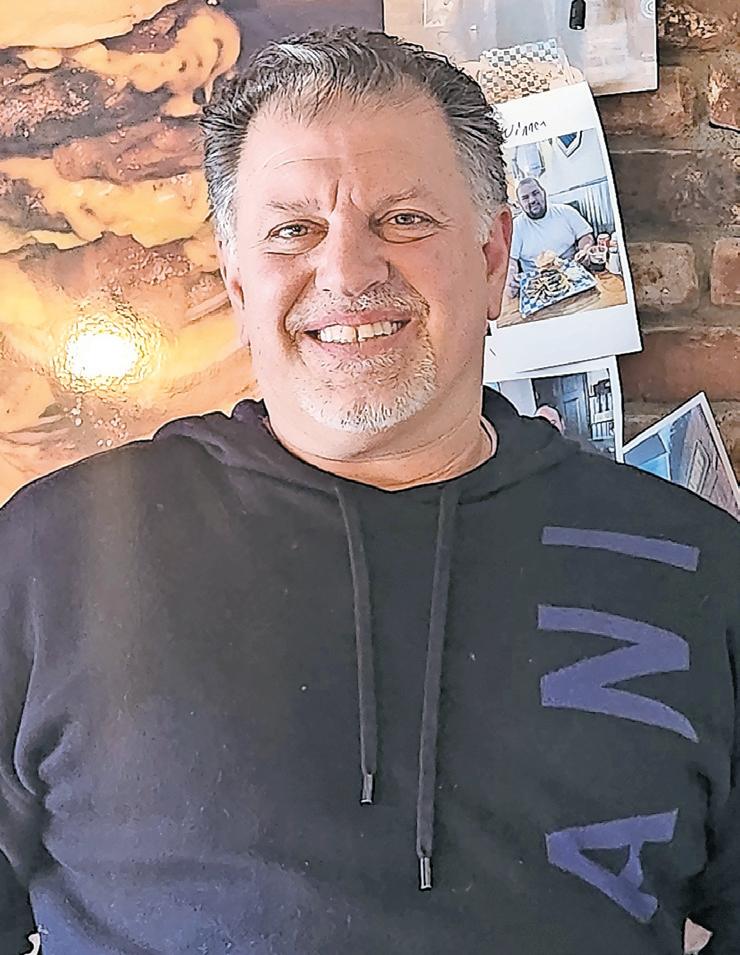
hand, has been a centrist; he’s not on the extreme left or right. He’s somebody who wants to get the job done, and that’s why I voted for him.”
Some voters attributed Pilip’s loss to her stance on issues, including abortion and the banning of assault weapons. Pilip didn’t define her position on assault weapons at the Feb. 8 debate with Suozzi on News12. She said only that she would ban automatic rifles, which has already existed for decades.
As for her stance on abortion, she repeatedly said that although she was pro-life, she would not push her beliefs on others or support a prohibition on a national level.
“She was against abortion,” Roni Chastain, a Glen Cove Democrat, said. “As a retired registered nurse, I know that women’s care isn’t just about abortions. I wouldn’t vote for anyone who is quote ‘right to life,’ because they’re really not right to life, they’re ‘right to birth.’ You know, they want to ban abortion, but they don’t want to do a thing about the assault weapons, which kill more children in this country than in any other country.”
Janet Viel, a Democrat who also voted for Suozzi, agreed. “Pilip was against abortion. And I’m totally against that,” the Glen Cove resident said. “I mean, I have granddaughters, and I’d hate to think that if something happened with one of them and they needed to have an abortion, they’d be told that they couldn’t get it.”
Viel also said she wasn’t surprised that Suozzi won, describing him as a “good person who knows what he’s doing.”
Lagos said that Pilip’s stance on abortion wasn’t the reason she lost. “She has no control over that,” Lagos said. “She can’t change the laws in New York.”
Suozzi, who comes from a family of politicians, has a record, Lagos added, having been an elected leader for so many years.
“What is her record? She never had a

The Republican candidate, Mazi Pilip, was relatively unknown before she entered the race for Congress. Her refusal to attend pre-election events and forums led voters to say they could not vote for someone they knew nothing about.
record,” he said of Pilip. “You can’t talk about something that you have no idea about.”
But Leary said he believed her stance on abortion did hurt Pilip. “I think it was a lot of the focus and advertisements on the abortion issue,” he said. “People feel very strongly about that.”
Hopkinson confirmed what many voters are experiencing with elected leaders: party-based partisanship so ironclad that it pushes aside the electorate’s needs.
“By and large, the folks in this particular district are sick and tired of people that aren’t willing to work with both sides to get the job done,” Hopkinson said. “So I think Tom’s track record was something that was demonstrative — that he will do what he has to do to get the job done. That was his catch(phrase) during the campaign, and I think he’s right.”
Additional reporting by Roksana Amid and Will Sheeline.
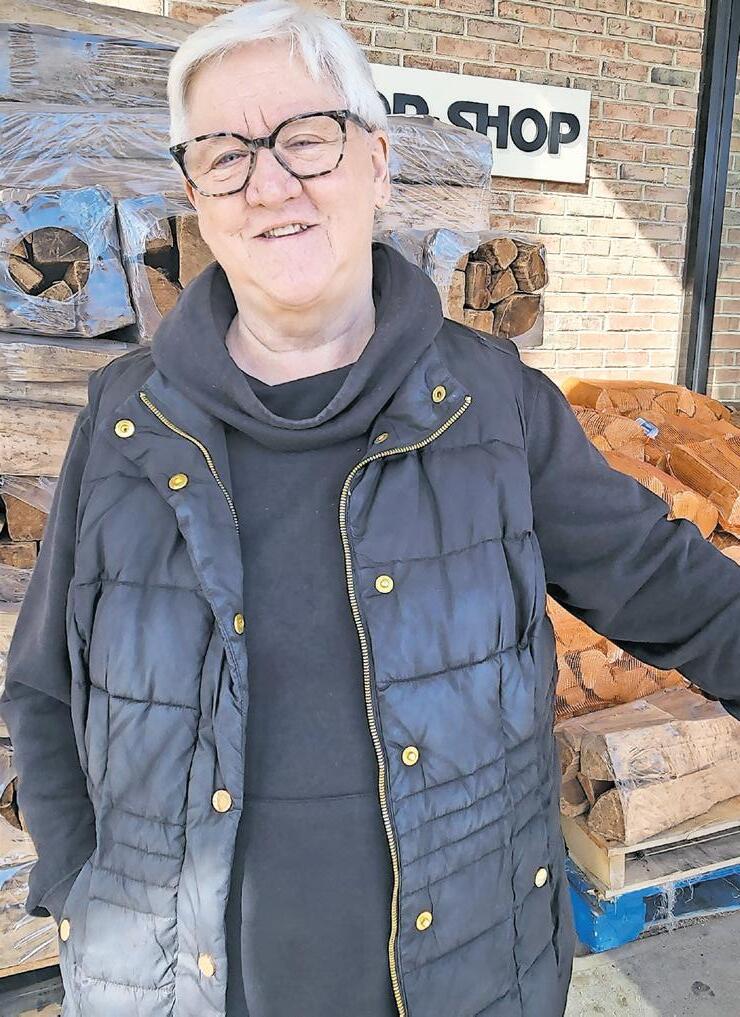

In the light of the moon, a little egg lay on a leaf.
That’s how the journey started for Eric Carle’s Very Hungry Caterpillar, the beloved character from his acclaimed picture book of the same name. Now, Long Island Children’s Museum takes the magnifying glass to Carle’s curious bugs in its newest exhibit, “Very Eric Carle: A Very Hungry, Quiet, Lonely, Clumsy, Busy Exhibit.”
Created by the Pittsburgh Children’s Museum and The Eric Carle Museum of Picture Book Art, it’s a follow-up of sorts to last year’s popular Mo Willems exhibit, which also encouraged kids to step into the creative imagination of a beloved author-illustrator.
Visitors find themselves inside the pages of Carle’s colorful books. His “Very” series — all illustrated in his hand-painted tissue paper collage technique — introduces five special insects who take journeys of discovery. Each story is a testament to Carle’s love of nature along with his recurring themes of friendship, creativity, and the power of imagination.
The colorful picture books — more than 70 in all — have been captivating young children since Carle’s first publishing effort, the counting book “1,2,3 to the Zoo,” in 1968.
From there, his “Very” books took off the following year, beginning with the one that started it all, “The Very Hungry Caterpillar,” of course. Families were immediately captivated by Carle’s little bugs with big emotions.
There’s a deep-felt connection to the insects, according to Ashley Niver, the museum’s education director.
“Children have a fascination with things that are even smaller than they are because they’re usually the ones looking up at the world,” she said. “I find that they have a lot of care and concern for these small living things. They enjoy the roleplay of being a friend of one or becoming one, like wearing the wings of a butterfly and flying around.”
And, naturally, the insatiable caterpillar holds a special place in everyone’s hearts.
“We’ve had parents mention that they read ‘The Very Hungry Caterpillar’ as a child and now they are reading it to their child,” Niver says. “The messaging is something that resonates.”
The exhibit may be indoors, but the focus is fully on the outside world, exploring the diversity of the insect kingdom through Carle’s imagination.
“A lot of people relate to ‘The Very Hungry Caterpillar,’



• Now through May 12, Tuesday through Sunday, 10 a.m.-5 p.m.
• $17 museum admission, $16 seniors 65 and older; additional fees for theater programming
• View the events calendar at LICM.org for additional information, or call (516) 224-5800
• Long Island Children’s Museum, Museum Row, Garden City.
but there are a lot of other lovely stories,” Niver says. “I don’t think that everyone is as well-versed in some of his other books, so I’m happy that this features some more of them.”
Tumble in the grass, weave a web, find a friend, and even become a butterfly during your visit.
Upon arrival, visitors can follow the Very Hungry Caterpillar’s path on a journey through largerthan-life pages of the book, eating foods on the way to becoming a butterfly. Once the end is reached, you’re now ready to spread your wings.
The Very Busy Spider component includes a giant, web-like structure to step through. This activity tests dexterity, strength and flexibility as kids move across the challenging surface.
At the Very Busy Spider’s Weaving Wall everyone can try to spin their own web on the large wall, experimenting with a variety of stringy materials.
Master new skills at the Very Clumsy Click Beetle Playscape. Here, visitors rummage across a pile of pebbles, crawl through tall blades of grass, step across stepping stones, and walk across the stem of a poppy flower in this playful landscape. Step up to the challenge and persevere like The Very Clumsy Click Beetle.
Also try to catch some light at the Very Lonely Firefly “Find Your Light” interactive station. Move hands and body to lure a firefly toward you. Even work with others to attract multiple fireflies and try to form a group of the beautifully lit insects.
At another component, kids can touch The Very Quiet Cricket and his friends on a relief mural to trigger a sound and create a one-of-a-kind musical composition. The various insect sounds harmonize together to make a “symphony” comprised of rhythms and sounds found in nature.
The exhibit’s studio portion offers up facts about Carle’s life and artistic process.
“Yellow was his favorite color,” Niver says. “Yellow was always the most challenging for him, which I thought was a cool fact. He only mastered four shades of yellow.”
After all that busyness being a bug, families may want to relax by taking a moment to read some books. The nook area is a cozy spot where everyone can nuzzle up in a reading cocoon and read the “Very” stories together.
Through his stories, Carle reminds us: “Simplify, slow down, be kind. And don’t forget to have art in your life — music, paintings, theatre, dance and sunsets.”

Audra McDonald is unparalleled in the breadth and versatility of her artistry as both singer and actor. Experience her inimitable talent in a spellbinding evening of song that showcases her extraordinary vocal range. Winner of six Tony Awards, two Grammys and an Emmy, McDonald possesses a ‘lustrous lyric soprano’ (The New York Times) and an incomparable gift for dramatic truth-telling. This stage and screen icon lends her luminous voice and committed stage presence to an intimate concert of Broadway favorites, standards, seldomheard gems, and so much more, accompanied by pianist Jeremy Jordan. With Tony wins in all four eligible acting categories, countless other theatre honors — and a National Medal of Arts conferred by President Barack Obama in 2015, among her other accolades — McDonald is among the most lavishly awarded performers of our time.
Friday, Feb. 23, 8 p.m. Tickets start at $60. Tilles Center for the Performing Arts, 720 Northern Blvd., Brookville. Tickets available at Ticketmaster.com, TillesCenter.org or (516) 299-3100.

Celtic-punk rockers Flogging Molly have hit the road with their ‘Road to Rebellion’ tour, sure to rouse audiences with their anthemic odes to the Emerald Isle. Formed in L.A. in 1997 by Irish expat Dave King, the band got its start (and its name) from local bar Molly Malone’s, where they performed, grew their following, and laid down the blueprint for eventual success. Their infectious Celtic-tinged reels are perfect for dancing along to, for those who love their Irish heritage, and those who just want a good time. Expect an eclectic mix of old favorites, sing-a-longs, rare acoustic numbers and new material — all strung together by King’s cheeky tales and jokes and first-rate musicianship. With numerous latenight television appearances, a soldout Salty Dog Cruise through the Caribbean, and a yearly St. Patrick’s Day Festival in L.A., the band’s juggernaut continues.
Sunday, Feb. 25, 7:30 p.m.
$79.50, $49.50, $39.50. The Paramount, 370 New York Ave., Huntington. Tickets available at Ticketmaster.com or ParamountNY.com.
March 1 12 1245321


It’s a beautiful sunny summer day in the meadow. Leo Lionni’s beloved children’s books come to life once again, in “Frederick,” on the Long Island Children’s Museum stage, Friday, Feb. 23, 11:30 a.m., 2 p.m., 6:15 p.m. (sensory-friendly performance); Saturday, Feb. 23 ,11:30 a.m. and 2 p.m.
Mouse friends Nellie, Sunny, Baby, Ernest, and Frederick are playing their musical instruments and having fun singing, until a leaf falls from the sky — autumn is here! Winter will be coming soon. All the mice get to work gathering supplies for winter, except, where is Frederick? He is gathering supplies, too, in his own unique way.
With toe-tapping Americana music inspired by bluegrass, gospel, and folk, this is an engaging tale about the power of the arts, community, and that no mouse gets left behind. $10 with museum admission ($8 members), $14 theater only. Museum Row, Garden City. (516) 224-5800 or LICM.org.



On exhibit
Nassau County Museum of Art’s latest exhibition, “Our Gilded Age,” examines the appearances and the realities of an era that mirrors our own in many ways.
Like the nation’s economy, American art and literature flourished during the Gilded Age. The art of John Singer Sargent, Childe Hassam, Louis Comfort Tiffany and others adorned palatial residences designed by Stanford White and Ogden Codman Jr., architect of the museum’s own quintessential Gilded Age mansion.
Drawing heavily upon the local literary history of Long Island, including William Cullen Bryant, Mark Twain (who named the Gilded Age), Walt Whitman, Edith Wharton and others, the exhibition will include paintings, fashion, decorative arts including period silver and china, photographs, manuscripts, first editions and other historic memorabilia.
The “Upstairs, Downstairs” approach to the life of a country house brings to life not only the storied conspicuous consumption for which the Gilded Age was infamous, but also the real lives of these many individuals who maintained the palatial estates where that lifestyle was enjoyed.
On view through March 10 Nassau County Museum of Art, 1 Museum Dr., Roslyn Harbor. (516) 484-9337 or NassauMuseum.org.
Friend Follow the SEA CLIFF/GLEN HEAD page today!










• Get local news • Share your content • Comment on stories Scan this QR code to visit the Seacliff / Glen Head Herald’s Page




Sea Cliff Arts Council member
Kaylin Burger’s paintings are on view at Sea Cliff Village Library, through April. Meet her at an opening reception, Friday, Feb. 23 , 6-7 p.m. She embodies a distinctive perspective shaped by the diverse cultural landscapes of both the east and west. Enriched by her experiences, Burger integrates elements from both worlds into her work, creating a harmonious fusion of influences that captivates the viewer. Immersed in the familiarity of coastal living, Burger finds boundless inspiration in the ebb and flow of the sea, inviting all to experience a sense of calm. 300 Sea Cliff Ave. Visit SeaCliffArtsCouncil.org.
Nellie McKay performs
The effervescent multiinstrumentalist singer-songwriter returns to My Father’s Place with music from her recently released album, “Hey Guys, Watch This,” Friday, March 1, 8 p.m. Recorded in Charleston, West Virginia with The Carpenter Ants and a roving retinue of musical compadres, her album traces the haunted sounds of Appalachia to a renaissance of revelry.
Doors open at 6 p.m., concert is at 8 p.m. 221 Old Northern Blvd., Roslyn. For tickets/ information, visit MFPProductions. com or call (516) 580-0887.
Free tax help is provided by AARP trained volunteers at the Glen Cove Public Library on 4 Glen Cove Ave, Glen Cove. Wednesdays, through April 10 , 9 a.m. to 3 p.m.
Be sure to bring your tax package, W-2 forms, your real estate property tax bill, a copy of your tax return and any other information that might be helpful in correctly filing your tax return. Both spouses must be present for married couples filing joint tax returns. Masks are required to be worn while receiving tax assistance regardless of vaccination status. 4 Glen St. Visit GlenCoveLibrary.org or (516) 676-2130.
Join Glen Cove Chamber of Commerce for a networking luncheon at Tocolo Cantina, Wednesday, Feb. 28 , 12:30 p.m. $25 per person; cash bar available. 120 Village Square. Visit GlenCoveChamber.org for information.
Join Scott Defrin, owner of European Decorative Arts in Greenvale for Nassau County Museum of Art’s exhibit related program “Collecting Decorative Arts During the Gilded Age; Connoisseurship vs. Decoration,” Sunday, Feb. 25, 3 p.m.
New York was the center for collecting during the Gilded Age. More money was spent on fine art, decorative art and interior decoration than at any time in American history. From Carnegie to Frick, and Morgan to Vanderbilt, Defrin discusses the different approaches to collecting among these magnates and how their fortunes helped establish the permanent collections of today’s museums.
Limited seating with registration required.1 Museum Dr., Roslyn Harbor. (516) 484-9337 or NassauMuseum.org.
Items on The Scene page are listed free of charge. The Herald welcomes listings of upcoming events, community meetings and items of public interest. All submissions should include date, time and location of the event, cost, and a contact name and phone number. Submissions can be emailed to thescene@liherald.com.
Princesses and other enchanting heroes and heroines take to the stage, when Plaza Theatricals presents its Winter Princess concert, Friday and Saturday, Feb. 23-24 , 11 a.m. Take part in an interactive sing-a-long featuring an array of everyone’s favorite winter characters. $15. See it at The Showplace at Bellmore Movies, 222 Pettit Ave., Bellmore (Friday) or at Elmont Memorial Library Theatre, 700 Hempstead Turnpike, Elmont (Saturday). For tickets, visit PlazaTheatrical.com or call (516) 599-6870.

Explore Raynham Hall, and three generations of Townsend family occupants, with spiritualist healer Samantha Lynn Difronzo, Friday, Feb. 23, 7:30-9 p.m. Robert Townsend, a central member of George Washington’s Culper Spy Ring, and British officer Col. John Graves Simcoe, previously occupied Raynham Hall during the Revolutionary War.
Transformed into a Victorian villa in the 1850s, the house offers two eras of interpretation, with the front showcasing the period of the Revolution, and the back preserving a late 19th century aesthetic. Reservations required. 20 West Main St., Oyster Bay. Visit RaynhamHallMuseum.org for reservations and information.
Christopher Minty, of the University of Virginia, examines the origins of the American Revolution in New York City through the lens of political culture and the development of loyalist networks, Thursday, Feb. 29 , 5:30-7 p.m., at Raynham hall Museum. He’ll discuss his recent book, “Unfriendly to Liberty: Loyalist Networks and the Coming of the American Revolution in New York City.” 30 W. Main St., Oyster Bay. Visit RaynhamHallMuseum.org for more information.
Participate in Glen Cove Public Library’s at-yourown-pace hour walk, every Thursday , at 9:15 a.m. All fitness levels are welcome.
Jumpstart your New Year’s resolution of better wellness or take the first steps to improving fitness. 4 Glen Cove Ave., Glen Cove. Register at GlenCoveLbrary. org or call (516) 676-2130 for more information.












































ANTOINETTE BIORDI
4X AWARD-WINNING REPORTER NEWS 12 ANCHOR/REPORTER

SARA GORE TVHOST, NBC UNIVERSAL LUXURYREALESTATESPECIALIST, SERHANT.
BROKER OF THE YEAR
Ron Koenigsberg
President American Investment Properties
CONSTRUCTION GROUP OF THE YEAR
The Kulka Group
FATHER & SON POWER TEAM
Dan Pulatani
Vice President
MP Construction D, Inc.
Mel Pulatani
President
MP Construction D, Inc.
ENGINEERING
Christopher W. Robinson, PE
President
R&M Engineering
INTERIOR DESIGNER OF THE YEAR
Beth Donner
Founder
Beth Donner Design
NOT-FOR-PROFIT
Eric Alexander
Director
Vision Long Island
POWER DEVELOPER OF THE YEAR
Steven Krieger, Esq.
CEO
B2K Development
POWER REAL ESTATE DUO
Kathy Kirby-Viard
Owner & Broker
Signature Premier Properties
Peter Morris
Owner & Broker
Signature Premier Properties
PROJECT OF THE YEAR
TRITEC Real Estate
Shoregate Project
PROJECT REDEVELOPMENT OF THE YEAR
Michael F. Puntillo
President
PX4 Development, LLC
REAL ESTATE INVESTMENT / DEVELOPMENT COMPANY OF THE YEAR
ATTORNEYS
Marna E. Bernstein, Esq.
Partner
Cullen and Dykman LLP
Elisabetta T. Coschignano, Esq.
Member
Sahn Ward Braff Koblenz Coschignano PLLC
Jack M. Martins, Esq.
Partner
Harris Beach PLLC
Jacquelyn L. Mascetti, Esq.
Partner Herman Katz LLP
BROKERS
Paul Leone
Senior Vice President
CBRE
David B. Sargoy
Director-Commercial Real Estate Division
Brown Harris Stevens Commercial Real Estate
DEVELOPERS
Pelops Damianos
Principal Damianos Realty Group LLC
ECONOMIC DEVELOPMENT
Brad Griggs
Senior Manager, Economic Development
Amazon
ELECTRICAL SERVICES
International Empire Electrical Corp.
ELEVATOR
Donald Gelestino
President & CEO
Champion Elevator Corp.
ENVIRONMENTAL
Chuck Merritt
President/LEED AP
Merritt Environmental Consulting Corp.
INDUSTRIAL DEVELOPMENT
Lisa M.G. Mulligan
CEO
Brookhaven Industrial Development Agency (IDA)
Kelly Murphy
Acting Executive Director
Suffolk County Industrial Development Agency (IDA)
TAX CERTIORARI
Cara P. Cronin, Esq.
Partner
RichnerLIVE’s third annual R.E.A.L. Awards will spotlight entrepreneurs, professionals, and visionaries in Long Island’s real estate and related industries who have achieved success in their respective roles while also being actively involved in community contributions and advocacy.

To
PRODUCED BY
A portion of ticket proceeds will benefit a local charity.


Joseph A. Farkas
CEO & Founder
Metropolitan Realty Associates LLC
RESIDENTIAL & COMMERCIAL BROKER
Gina Coletti
Licensed Real Estate Broker
GC Advisory Group Inc
RISING STARS
Daniel Scarda
Director of Corporate Finance
The Crest Group
Marco Scarda
Director of Business Development
The Crest Group
Jonathan Schuman
Licensed Associate Broker
Blue Island Homes
Justin Breslin
Vice President
Breslin Realty Development Corp.
ROOKIE OF THE YEAR
Stephen Cadorette
Senior Associate
Cushman & Wakefield
TRAILBLAZER
Sara Gore TV Host NBC Universal
Luxury Real Estate Specialist
SERHANT.
ARCHITECT
Mark Stumer
Principal Mojo Stumer Associates
Cronin & Cronin Law Firm, PLLC
TITLE INSURANCE
Angelo Santomauro
Senior Partner & Vice President
All State Abstract
RESIDENTIAL AGENTS
Michelle Keegan
Licensed Real Estate Salesperson
Douglas Elliman Real Estate
Julia Krispeal
Licensed Real Estate Salesperson
SERHANT.
Deborah Pirro
Licensed Real Estate Salesperson
Daniel Gale Sotheby’s International Realty
ATTORNEY
Anthony A. Nozzolillo, Esq.
Attorney at Law
Anthony A. Nozzolillo, Esq.
BROKERS
Michael Foley
Licensed Real Estate Broker
Frontline Realty Group
Dr. Sharon R. Frank
Expert Realtor & Business Strategist
Sharon R. Frank Real Estate LLC
Kevin Leatherman
Licensed Real Estate Broker
Leatherman Homes
Connie Pinilla
Principal Agent
The Connie Pinilla Team at Compass
Natasha Williams
Licensed Real Estate Broker
Cornelius Group Real Estate























L
NOTICE IS HEREBY GIVEN that, pursuant to the provisions of Sections 1450 and 1452 of Article 14 of the Real Property Tax Law of the State of New York, I, Judith Phelps, Treasurer of the said Incorporated Village of Sea Cliff, will sell at public auction, in the manner provided by law, on the 15th day of March at 10:00 o’clock in the forenoon, in the Board Room at the Village Hall in said Village, so such of each of the following parcels of real estate upon which Village Taxes remain unpaid as will be sufficient to discharge the tax, fees, interest and charges which may be due thereon respectively at the time of such sale, and shall continue the same from day to day until the said sale shall be completed. Such purchaser at such tax sale will be required to pay ten percentum of his respective bid to the undersigned Village Treasurer immediately upon the conclusion of this sale and the remaining ninety per centum within ten days after the sale and upon such payment in full shall receive a written certificate of sale describing the real estate purchased and sum paid therefor. THE NAMES OF OWNERS SHOWN ON THIS LIST MAY NOT NECESSARILY BE THE NAMES OF THE PERSONS OWNING THE PROPERTY AT THE TIME OF THIS ADVERTISEMENT. SUCH NAMES HAVE BEEN TAKEN EITHER FROM ASSESSMENT ROLLS PREPARED AS OF APRIL 2023 OR FROM THE RECORDS OF THE RECEIVER OF TAXES AND FREQUENTLY DIFFER FROM THE NAMES OF THE OWNERS AT THE TIME OF PUBLICATION OF THIS NOTICE. IT MAY ALSO BE THAT SUCH OWNERS ARE NOMINAL ONLY AND ANOTHER PERSON IS ACTUALLY THE BENEFICIAL OWNER
PROPERTY OWNERS MAY MAKE PAYMENT AT VILLAGE HALL PRIOR TO TAX SALE. PAYMENT MUST BE BY CASH OR CERTIFIED CHECK ONLY.
The following is a list of the parcels of real estate to be sold, including the amount of the tax, fees, interest and charges thereon, all parcels being within Section 21 of the Nassau County Land and Tax Map, to wit:
Dear Great Book Guru, We are interested in starting a small book club reading only small, but extraordinary books, filled with thought-provoking ideas. Any suggestions?
I just finished in about three hours the perfect book for you and your friends:
“The Vulnerables,” by Sigrid Nunez. In 249 pages Nunez covers aging, friendship, literature, grief, memory, and yes, zoology, in a beautifully meditative style.

Set in the first months of the pandemic, the novel tells the story of three “vulnerables” who find themselves in lockdown in a luxurious New York City apartment. The trio includes our narrator, a woman in her seventies, a young college student with a history of psychiatric breakdowns, and a spirited parrot — all vulnerable in different ways. When her friend finds herself on the West Coast unable to return, she asks the

narrator to care for her parrot who is alone as everyone in the building has fled the city for second homes upstate. The narrator spends much of her days and nights thinking about her past and present with many references to her favorite authors, especially Joan Didion, Virginia Woolf and Charles Dickens. As a writer herself, she questions the value of literature in difficult situations. Through a series of miscommunications, Vetch, a young, troubled college student, arrives to share the apartment, and the two form a mutually beneficial alliance. Eureka the parrot serves as an ever-present source of muted comic relief.
Throughout this novel, we see evidence that even the smallest acts of kindness and generosity can make a huge difference in people’s lives. Highly recommended!
Would you like to ask the Great Book Guru for a book suggestion? Contact her at annmdipietro@gmail.com.


LEGAL NOTICE
STATE OF NEW YORK
SUPREME COURT:
COUNTY OF NASSAU WELLS FARGO BANK, N.A., Plaintiff, v. CHRISTOPHER LASALA A/K/A CHRISTOPHER T. LASALA, FRANCINE LASALA, ET AL.
Defendants.
NOTICE OF SALE IN FORECLOSURE
PLEASE TAKE NOTICE
THAT
In pursuance of a Judgment of Foreclosure and Sale entered in the Office of the County Clerk of Nassau County on August 11, 2023, I, Ron Ferraro, Esq., the Referee named in said Judgment, will sell in one parcel at public auction on March 7, 2024 at On the north front steps, facing Old
Country Road, of the Nassau County Supreme Court, located at 262 Old Country Road, Mineola, NY, at 2:00 PM the premises described as follows:
40 Spring Hollow Road a/k/a 40 Spring Hollow Road, Unit 32 a/k/40 Spring Hollow Rd 32 a/k/a 40 Spring Holw Road North Hills a/k/a Roslyn , NY 11040
SLB No. 8-A-818U
ALL that certain plot, piece or parcel of land situate, lying and being in the Incorporated Village of North Hills, Town of North Hempstead, County of Nassau, State of New York.
The premises are sold subject to the provisions of the filed judgment, Index No. 613302/2018 in the amount of $498,076.21 plus interest
LEGAL
HOLT, III, et al, Defts. Index #607341/2022. Pursuant to judgment of foreclosure and sale entered October 23, 2023, I will sell at public auction on the north front steps of Nassau Supreme Court, 100 Supreme Court Drive, Mineola, NY on March 12, 2024 at 2:00 p.m. prem. k/a Section 21, Block 94, Lot 5, 17. Sold subject to terms and conditions of filed judgment and terms of sale. JUDGE SCOTT H. SILLER, Referee. LEVY & LEVY,





















February is American Heart Month, and this is a story about my heart — literally and figuratively. It’s the reason I am where I am today.
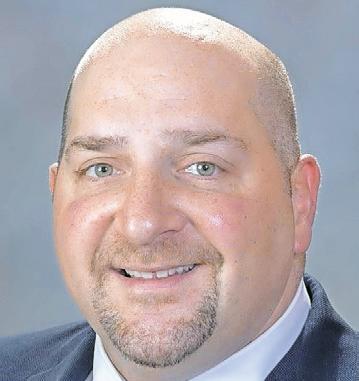
I was born with a significant heart defect called dextrocardia, as well as a ventricular septal defect. Basically, my heart was on the wrong side of my chest cavity and inverted — and it had a hole in it. When I was 3 months old, my doctors told my parents that I needed openheart surgery to close the hole. At the time, however, my mother was pregnant with my sister. My parents decided to wait until my sister was born before I underwent surgery. But somehow, for some reason, my heart decided that it had to be whole, and the hole I was born with began to close. My heart could stay as it was — imperfect and misplaced, but untouched.
Growing up, I found that I was doing a lot of things half-heartedly, so to speak. Schoolwork wasn’t heartening, and there were few things that excited me. I dreamed of becoming a lawyer, but I couldn’t muster up the resolve to pursue that dream — LSATs, law school, internships, thousands of dollars in loans, six more semesters of school, and years of building a professional profile.
Deterred by these seemingly insurmountable obstacles, I remained listless through my early 20s. For a few years after college, I worked in sales. I was good at it, but my heart was definitely in a different place.
That is, until it wasn’t.
went more than a dozen cardioversions to restore the heart’s regular rhythm, and tried various cocktails of medications, all to no avail.
A fter openheart surgery, I decided there was nothing I couldn’t make it through.
In my early 20s, I was diagnosed with atrial fibrillation, or AFib, also known as an irregular heartbeat. It’s fairly common among senior citizens, but as a 20-something in college, I was now a member of a not-so-enviable exclusive club. Over the next several years, I battled my irregular heartbeats, under-
Eventually I met a cardiologist who specialized in adults with congenital heart defects — adults like me. He informed my family and me that the hole in my heart had reopened, and that it was substantially larger than it was when I was a child. This was causing my irregular heartbeat, and it would at last need to be closed. At age 25, because of the placement of my heart, I was about to undergo a potentially first-of-its-kind open-heart surgery.
On March 15, 2007, after five hours of surgery, I awoke with a heart that was beating normally for the first time in almost five years. Making it through that operation sparked something in my soul. Instead of whining about what I had to do to get to where I wanted to be, I decided to ball my fists up, dig in and do it. After all, I had just made it through open-heart surgery. Was there
anything I couldn’t make it through? I finally sat for the LSAT and got myself into law school.
That’s the attitude that’s gotten me to where I am today. When I was burning the candle at both ends, cramming for law school exams and eventually the bar exams, I would remind myself that I was getting stronger. When I was struggling to build my own law practice while juggling my responsibilities as a husband and father, I would remind myself of all that my heart could handle.
Naturally, when I saw an opportunity to run for office, a chance to represent and fight for all the communities our local government has left behind, I knew that I could take the heartburn of an arduous campaign, and that I could win over hearts and minds. That’s the mentality that I bring to my law practice, and to my work with my fellow legislators.
The arc of my life’s journey is proof that we are all stronger than we know — that we are all more capable than we can comprehend.
Seth I. Koslow represents Nassau County’s 5th Legislative District.
Iread “Lady Chatterley’s Lover,” my first banned book, when I was 12. My friend lent me the book, and I found the good parts by the dogeared pages. The experience did not compromise my moral compass or corrupt me in any way I can discern. I am not recommending the book for today’s 12-year-olds, because it’s a pretty boring read, but I am advocating that a broad spectrum of books be available to students who choose to read them.
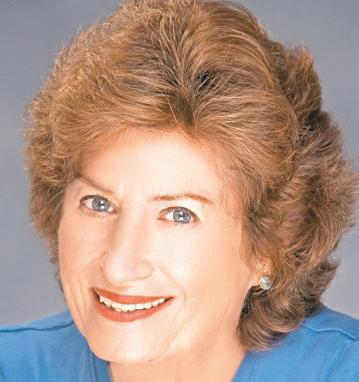
This month, Library Lovers Month, I want to push back hard against the selfappointed literature vigilantes across our country, who are removing books from school library shelves and banning them from classrooms under the guise of protecting children from inappropriate subject matter.
It’s called censorship, and the problem, of course, is who gets to decide what is appropriate or not. In the past, librarians have had full discretion in selecting books. They are trained for the job and trusted in their choices. In
the best libraries, the books reflect all the ways that children and teenagers can be in the world, including gay or trans or identified with any race or religion or socio-economic group.
work for vulnerable kids.
I don’t know if a book has ever saved someone’s life, but I know for sure that battles over books are endangering lives by keeping young people from information and stories that might validate their choices in important ways.
book-ban list, by definition, express feelings, experiences and political views that the prevailing culture prefers to pretend do not exist.”
SFor some young people, the school library is the only place they can read about kids just like themselves. They can learn that others share their confusion or anxiety or fear of being different.
tudents need open access to all kinds of books by all kinds of writers.
I don’t believe that a teenager can “catch” being gay or trans from reading about it, the underlying prejudice being that there is something wrong with that identity. We can’t scrub young adult literature for references to slavery or minority struggles or even violence, because the best writing reflects real life.
A couple of weeks ago, The New York Times told the story of a librarian in Idaho who organized a “Rainbow Squad,” welcoming children of different backgrounds to read and talk about books. A local church group protested, and the community is battling over whether the Rainbow Squad should be banned, along with the books they’re reading.
I wonder how this group threatens anyone, even as it creates a support net-
In The Washington Post last week, columnist Kate Cohen wrote about the school board in her hometown, Rockingham, Virginia, deciding to ban 57 books in the school library. One-third of the books feature gay or trans characters. Cohen wrote, “Freedom to read is the closest thing we have to freedom to think.”
This month, there can be no more pressing public business than to guarantee age-appropriate, open access to all kinds of books by all kinds of writers, for students across the land.
What can we do? Each of us can become familiar with our school and community libraries, stay informed about the books available to teens and oppose efforts by any groups of book police to decide what teenagers should read. In some communities in Florida, a single parent’s complaint about a book in a school library can get it banned.
As Cohen wrote, “The books on any
I think how lonely and desperate teenagers trying to figure out their lives without access to books must feel. Wellwritten books on racism or sexuality or addiction are a far better source for our kids than TikTok.
We read books for many reasons beyond wanting to be entertained — to solve the mysteries in our lives, to be dazzled or outraged by the way others live. Sometimes we can find our beliefs and lives affirmed in the pages of a new book.
The reason authoritarian entities, be they runaway school boards or governments, ban books is to limit access to ideas that might challenge their power.
We resist by reading and sharing.
The New York Public Library is offering free access to banned books for teenagers anywhere in the country through SimplyE, its e-reader app. The latest banned book pick is “All American Boys,” by Jason Reynolds and Brendan Kiely. It is available to all readers ages 13 and older.
There are worlds out there to be explored. I have had this joy in my life, and I want the same for every reader.
Copyright 2024 Randi Kreiss. Randi can be reached at randik3@aol.com.
In the past couple of weeks, we’ve been getting a lot of something we haven’t seen much of over the past couple of years: snow.
So much, in fact, that schools in our communities had no choice but to close. And because of that, we have just one thing to say to our school districts in Nassau County: Thank you for the snow day.
Yes, education works best when it’s rigorous and on a schedule. If the young minds loading buses each day were robots, then we’d probably be hesitant to interrupt the routine. Thankfully, our children are living, breathing people. And all of us can use a break from time to time — especially one we didn’t expect.
Anyone who grew up in a climate susceptible to winter almost assuredly experienced at least one snow day in their life, if not several. They go all the way back to the 19th century, when schools became gathering points children would flock to — and where safety would become paramount.
In places like Long Island, where crews are adept at clearing roads, even the best can be overwhelmed by significant storms and heavy snowfalls. And while it might feel like a free day off for many of our young learners, nearly all school districts have built snow days into the schedule — meaning any unexpected days off will be made up later in the spring.
We here on Long Island understand
the value of snow days, but not everyone shares those values. In fact, there is a growing contingent of education leaders right in our backyard who have been working hard to wipe snow days from existence.
It’s not that New York City has it out for an occasional unscheduled school closing. It’s just that the city’s education department has capitalized on the expansion of technology necessitated by the coronavirus pandemic, which made remote learning for all not just possible, but practical.
For the 1.1 million students who attend more than 1,800 schools in the city, instead of sitting inside a classroom to learn on days when it snows, they are sitting in their living rooms and bedrooms instead. All while other people their age, living just a few miles away, grab their snowsuits and sleds and enjoy the winter beauty Mother Nature has delivered.
Learning is important, but snow days are valuable. Quite valuable, in fact. Beyond safety, they provide a muchneeded mental health break — not just for students, but also for the adults responsible for their learning.
The pressure of academic demands and extracurricular activities can be intense. That can lead not just to stress, but even to burnout.
Snow days give all of us a chance to recharge and relax with some unscheduled playtime outdoors. And that’s important, too. We hear too much about
To the Editor:
In his Jan. 18-24 column, “Why can’t we be told the truth about congestion pricing?” State Sen. Jack Martins implied that New Yorkers are being tricked into congestion pricing for the benefit of the MTA. Nothing could be further from the truth.
There’s no question that charging drivers to enter Manhattan below 60th Street will reduce traffic and speed up buses, taxis and emergency vehicles in what is today the most congested district in the United States. With less traffic comes less air pollution and safer streets. That’s what happened in London, Stockholm, Milan and Singapore when they implemented similar programs.
And yes, revenue raised will go to investments in public transit, but Mr. Martins should celebrate that — after all, 80 percent of Nassau County commuters to Manhattan get there by transit. And a third of all Long Islanders’ wages are earned in Manhattan.
Investments in the LIRR are good for Long Island residents and businesses. Improvements like the Third
how video games, computers and television keep so many of our kids indoors. But freshly fallen snow is irresistible, and will almost assuredly get them outside to have some fun. It’s good for their physical health in a way that sitting in front of a computer, watching a teacher on Zoom, just can’t provide.
And a snow day is a chance to build community. Families come together to shovel sidewalks, or maybe help neighbors in need. Children get together, working to build snow forts, or even a snowman, complete with a carrot nose and a top hat.
And who doesn’t love an impromptu snowball fight?
All of that comes with many parents still working remotely, which helps mitigate child-care issues and costs that might otherwise accompany snow days.
Just remember that these days are not breaks for everyone. Let’s not forget the municipal workers who wake up early to plow the snow, as well as the brave souls at utility companies, hospitals, and fire and police departments who, as first responders, are always prepared for the worst.
Each one of our children will spend more than 1,200 days in class through high school. Let them have a break. And let’s show New York City yet another reason why more and more people choose to live and work here on Long Island.
Because on Long Island, snow days are cool.

Long Island has become the center of New York’s — and the nation’s — political conversation. In recent elections, state and local policies have had an enormous influence on Nassau and Suffolk County campaigns that ultimately played a decisive role in determining control of Congress.
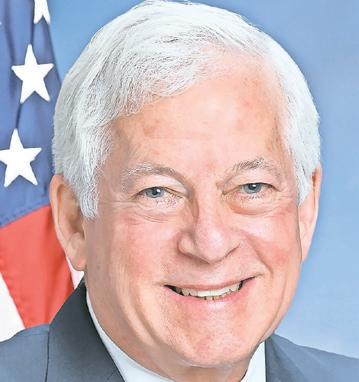
But while politicians and party operatives struggle to find a political advantage in laws passed by Albany or our County Legislature, real people affected by these policies are waiting for those of us in office to find common ground on issues that should bring us together, not divide us.
Look at the Raise the Age law, for example. In 2017, I was proud to join both my Democratic and Republican colleagues in support of ending New York’s shameful status as one of the last two states to prosecute all 16- and 17-year-olds as adults. Today, thanks to the law, a large majority of young people’s cases move through family court, where the goal is rehabilitation through effective intervention rather than criminalization.
Raise the Age is a crucial component in building a healthy, sustainable future. It allows young people to get the services they need to get their lives on track. It also allows them to access quality jobs and fully contribute to our society without convictions from when they were teenagers holding them back.
SContrary to false claims labeling family court a “slap on the wrist,” young people may face mandatory programs, supervision by law enforcement, pretrial detention, and placement in residential facilities. But when the system is working well, they are connected with a range of community-based services and resources, which aim to address the underlying factors that led them to commit crimes. And they can use of those services — and the opportunities they provide — without the burden of an adult criminal record.
reduction in shootings with injuries from 2021 to 2023.
As a former public defender, I know firsthand how crucial services like SNUG are to the health and safety of our young people and their communities. By targeting the crux of the issue, they reduce recidivism and help struggling youth become wellfunctioning, productive members of their communities.
etting young offenders straight without burdening them with adult criminal records.
Since Raise the Age took effect, thousands of young people who would otherwise have spent months or even years of their childhood in adult jails and prisons have had access to services designed to help them improve their lives and avoid future interactions with the criminal legal system. For some, this is the first time they have had trusted adults whom they can rely on and turn to for guidance.
vices, serious crimes perpetrated by those under 18 decreased by 12 percent in Nassau County and a stunning 57 percent in Suffolk. These statistics demonstrate the efficacy of, and critical need for, community-based programming to make our neighborhoods safer.
Despite Raise the Age’s success, its implementation has received a mere fraction of the funding state leaders promised. It’s been reported that as of 2022, only $270 million of the $800 million that was appropriated for it had been invested in community-based programs and services for young people around the state. Think of how much more successful Raise the Age could be if the state adequately funded it, and community-based organizations and service providers could apply for and receive that funding directly.
One such service is the SNUG Street Outreach program, which uses a public health model to reduce gun violence throughout the state by mediating conflict, mentoring youth, and working with local partners to make our streets safer. The 13 communities that are home to the program — including Hempstead — reported a 36 percent
Track project that Mr. Martins opposed, but the MTA got done — on time and under budget — benefit hundreds of thousands of Long Islanders every day. Congestion pricing will make even more of those possible.
JOHN J. MCCARTHY LMTA chief of policy and external relationsTo the Editor:
We are professional firefighters! I take exception to the comment made by writer Brandon Cruz in his article “Long Island needs more volunteer firefighters” (Feb. 8-14) that our volunteer firefighters are not “professionals.” Cruz reports that if new volunteers don’t join local fire departments, communities will need to hire “professional” firefighters.
Our volunteers are professional firefighters, just not paid for what we do for our communities. We, as volunteers, don’t just put on turnout gear and rush into a burning building without the needed, required and constant training provided by the Nassau County Fire Service at its training facility in Bethpage, and here in Lynbrook, our own department’s
training and drills at our training facility in Wilcox Alley.
Back some 44 years ago, the Lynbrook Fire Department was facing a firefighter shortage, and formed the Lynbrook Junior Fire Department for youngsters 12 to 17, to interest them in firefighting, with the goal of becoming firefighters when they turned 18.
During their time as juniors, the youngsters learn basic firefighting methods without actually fighting fires. When they turn 18, they join one of our fire companies, begin formal basic training at the county Fire Service Academy and are considered probationary firefighters for one year while they complete additional training.
Yes, we always need more volunteers, but our junior program is helping to fill our ranks.
Many area fire departments have also formed junior programs, based on ours, to help fill their own ranks. Admittedly, the juniors aren’t always enough, and some years are better than others. Lynbrook’s chief of department and three assistant chiefs came through our junior program. This isn’t the first time that all four chiefs have been former juniors. Many of our current volunteers came through our junior program.
There are now 30 youngsters in the Lynbrook Junior Fire Department. Two
In recent years, I’ve been disappointed by how many of my misinformed colleagues have attempted to blame Raise the Age for an increase in crime on Long Island, especially when the data say otherwise. This should be a law that unites us.
From the law’s implementation in 2018 through 2022, according to the state Division of Criminal Justice Ser-
It’s high time that we rise to the occasion and demand more for the most vulnerable members of our communities, and that starts by calling on Albany to invest in our youth by fully funding Raise the Age and supporting evidence-based strategies that create pathways for our young people’s rehabilitation, growth and opportunity. Let’s not let fear-mongering and political mudslinging talk us out of public policy that is proven to work — and that lifts all of us up.

former juniors joined fire companies last month alone when they turned 18. It is estimated that over 40 percent of our juniors go on to become Lynbrook firefighters.
STEVE GROGAN
Lynbrook
Grogan is a 56-year member of the Lynbrook Fire Department and an ex-captain and honorary chief. He co-founded the Lynbrook Junior Fire Department, and is the department’s public information officer.

